What other countries are doing
Overview
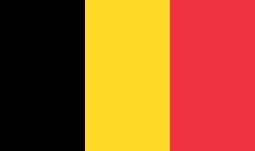
Belgium
ONDRAF/NIRAS is responsible for the management of all the radioactive waste in Belgium. Belgium has seven nuclear power reactors that generate about 41 per cent of its electricity.
In 2022, a Royal Decree was published, serving as the first regulatory act to formally establish a national policy for the safe and responsible long-term management of high-level and long-lived radioactive waste in Belgium. Belgium has taken the decision in principle to have a deep geological repository but has not yet decided on the concrete terms of this storage.
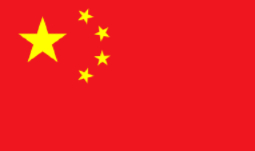
China
The China National Nuclear Corporation (CNNC) is responsible for the development of a deep geological repository for used CANDU fuel, and for high-level waste from the reprocessing of used light water reactor fuel.
China’s site selection process, which is technically-driven, began in 1986 and focused on three candidate locations in the Beishan region of Gansu province in northwest China. In 2016, one of the siting regions was selected to host an underground research laboratory. The site for the underground research laboratory has strong potential to become the eventual site of the repository. Site selection is expected in the 2020s.
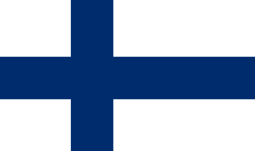
Finland
Posiva is responsible for the final disposal of the used nuclear fuel of its two owners: Teollisuuden Voima and Fortum Power & Heat. These companies currently operate five nuclear reactors.
Posiva’s site selection process, which was technically-driven and consent-based, began in the 1980s. In 2000, the Olkiluoto island in Eurajoki was selected as the site for final disposal. The construction licence application for the repository was submitted in 2012 and granted in 2015. An application for a licence to operate was submitted in 2021. Construction is in progress and the excavation of the first five disposal tunnels was completed in June 2022.
Civil construction of the fuel encapsulation facility has been completed and initial commissioning began in 2024.

France
Andra is responsible for the long-term management of France’s used nuclear fuel. France currently has 57 operational nuclear power plants, with 70 per cent of its electricity coming from nuclear power.
Andra’s siting studies began in 2007, just outside the village of Bure in the Champagne-Ardenne region of eastern France. In 2023, Andra submitted its initial licence application for a deep geological repository. The French Environmental Authority published its opinion in 2024 with respect to initial authorizations, defining additional information to be provided.
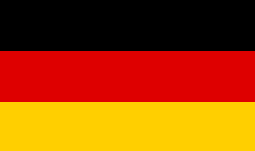
Germany
BGE, Bundesgesellschaft für Endlagerung, is the German federal company for radioactive waste disposal. The BGE is currently searching for the location of a repository for high-level radioactive waste. The BGE also operates the Konrad and Morsleben Final Repositories for low- and mid-level radioactive waste, and is decommissioning the Asse II and Gorleben mines.
The BGE is presently in Phase 1 Step 2 of its site selection process. This aim of this step is to identify siting regions. These regions are to be explored above ground as part of the search for a final repository site.

Hungary
PURAM is responsible for implementing the site selection process for a deep geological repository for Hungary's high-level nuclear waste. The site selection process is expected to be completed by 2030.
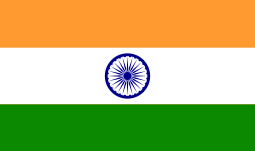
India
The Government of India’s Atomic Energy Commission (AEC) conducts research on repository development and siting at the Bhabha Atomic Research Centre in Trombay, Mumbai. Siting activities for a planned repository are focused in the northwest Rajasthan region of India.
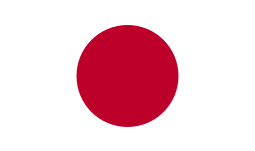
Japan
The Nuclear Waste Management Organization of Japan (NUMO) is responsible for ensuring the safe, long-term management of vitrified high-level and long-lived intermediate-level radioactive wastes (the latter is termed TRU waste in Japan) from Japan’s nuclear fuel cycle. The research and development for geological disposal of these wastes is supported by relevant organizations, including the Japan Atomic Energy Agency, which is operating off-site underground research laboratories in both crystalline rock and sedimentary rock.
NUMO has been promoting the siting process since its establishment in 2000. After the great Tohoku earthquake and Fukushima Daiichi accident, a range of discussions were held to reconstruct the geological disposal program at the government level.
The Basic Policy Plan according to the Designated Radioactive Waste Final Disposal Act was amended in May 2015. This included a siting strategy in which the Government of Japan will play a proactive role by nominating “scientifically favourable areas” to assist in resolving the issue of high-level radioactive and TRU waste disposal. In addition, there is a plan to help regional populations, and the Japanese public as a whole, understand the geological disposal program. A detailed geological map, including exclusion areas, was released in 2017 for public review and discussion. Initial site selection activities are underway in three communities.
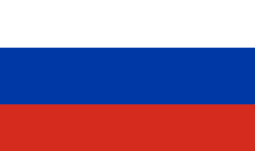
Russia
The National Operator for Radioactive Waste Management (NO RWM) is the responsible national operator for the Russian nuclear waste management program.
In 2008, the Nizhnekansky Rock Massif at Zheleznogorsk in Krasnoyarsk Territory was proposed as the location of the deep geological repository for high-level waste and used nuclear fuel. In 2016 the site was approved. Construction of the repository will only occur after a period of research using an underground research laboratory, which is currently under construction at the site.
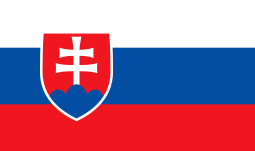
Slovakia
JAVYS (Nuclear and Decommissioning Company) is the implementer of the site selection process for a deep geological repository for Slovakia's used nuclear fuel. There are two sites undergoing detailed site investigations.
Slovakia is also considering the option of participating in a shared international repository project.
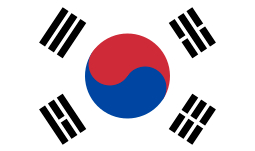
South Korea
The Korea Radioactive Waste Agency (KORAD) is responsible for the implementation of South Korea's radioactive waste disposal program. Nuclear power provides about 30 per cent of the country’s electricity. Currently, all Korea’s used fuel is stored at the reactor sites.
In December 2024, a site was selected for a generic underground research laboratory near Taebaek City in Gangwon Province, which is to begin operation in 2033.
A Special Act on the Management of High-Level Waste was passed by South Korea’s National Assembly in March 2025. The act includes provisions for the construction and operation of interim storage facilities and permanent disposal facilities for high-level radioactive waste. It also includes the establishment of a procedure for selecting a high-level radioactive waste storage site and support for hosting areas. The interim storage facility will be operational before 2050 and the disposal facility before 2060.
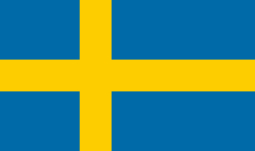
Sweden
The Swedish Nuclear Fuel and Waste Management Company (SKB) was established in the 1970s to manage Swedish used nuclear fuel and radioactive waste. Sweden currently has six operational nuclear power plants that provide about 30 per cent of its electricity.
SKB’s siting process for a used fuel repository began in the early 1990s. In 2009, Oskarshamn was chosen as the host municipality for the interim storage facility and encapsulation facility, and the Forsmark site in Östhammar was selected as the host municipality for the final repository.
In 2011, SKB applied for a deep geological repository construction licence. In 2024, they received an environmental permit to construct the encapsulation plant and repository. Construction of the repository started in January 2025.
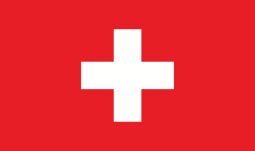
Switzerland
Nagra is responsible for the safe management of Switzerland’s used nuclear fuel. It also engages in co-operative research with other national nuclear waste management organizations around the globe. Switzerland currently has four operational nuclear power plants producing about 29 per cent of its electricity.
Nagra’s siting process began in 1972. Zürcher Weinland was originally identified as a potential siting region. However, in 2005 the Swiss government requested that Nagra identify alternative regions. In 2007, the Swiss Federal Office of Energy issued a “Sectoral Plan for Geological Repositories” for public review. The Swiss Federal Council approved the strategic part of the plan.
At the end of 2018, after a period of public consultation, Nagra officially entered the last stage of its site selection process, with detailed site investigations of three siting regions. Nagra announced in 2022 that Switzerland’s used nuclear fuel will be stored for the long term at Nördlich Lägern, which is located north of Zurich. Nagra submitted its general licence application in 2024.
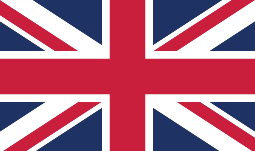
United Kingdom
Nuclear Waste Services (NWS) is responsible for the permanent management of nuclear waste in the U.K. The U.K. has nine operating nuclear power plants, which produce about 16 per cent of the country’s electricity. NWS is a subsidiary of the U.K.’s Nuclear Decommissioning Authority.
The U.K. initiated a siting process for a deep geological repository for high-level waste in 2018. Currently, two communities are engaged in the process.

United States
The U.S. Department of Energy (DOE) is dedicated to the safe disposal of waste, including the safe and efficient management of used nuclear fuel for disposal in a geological repository.
The DOE engaged in the screening of nine candidate sites from 1983 to 1986. In 1987, Congress directed them to study only one site, Yucca Mountain, located near a nuclear weapons test site in Nevada. In 2002, the Secretary of Energy recommended Yucca Mountain to the president. While the president approved the site, the State of Nevada strongly opposed it.
In 2009, the government indicated that Yucca Mountain was no longer an option. A Blue Ribbon Commission on America’s Nuclear Future was formed to provide recommendations for developing a safe, long-term method to manage nuclear waste. In 2013, the administration issued its Strategy for the Management and Disposal of Used Nuclear Fuel and High-Level Radioactive Waste, a framework for moving towards a sustainable program for managing the country’s used fuel.
A consent-based siting process is being considered by the DOE for consolidated interim storage.
